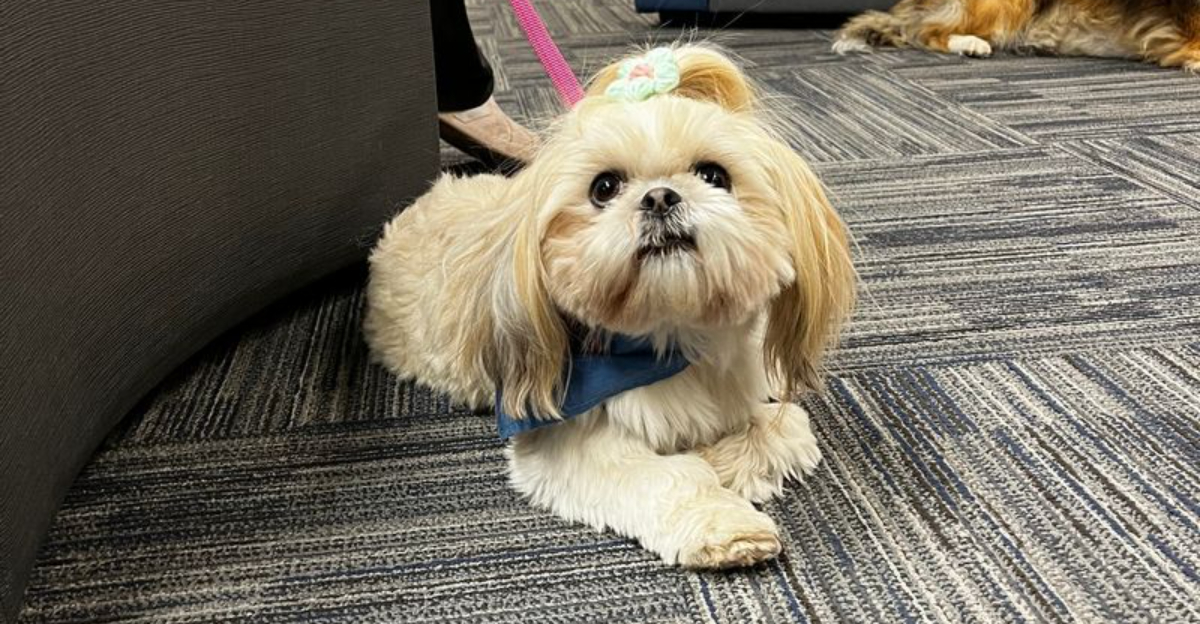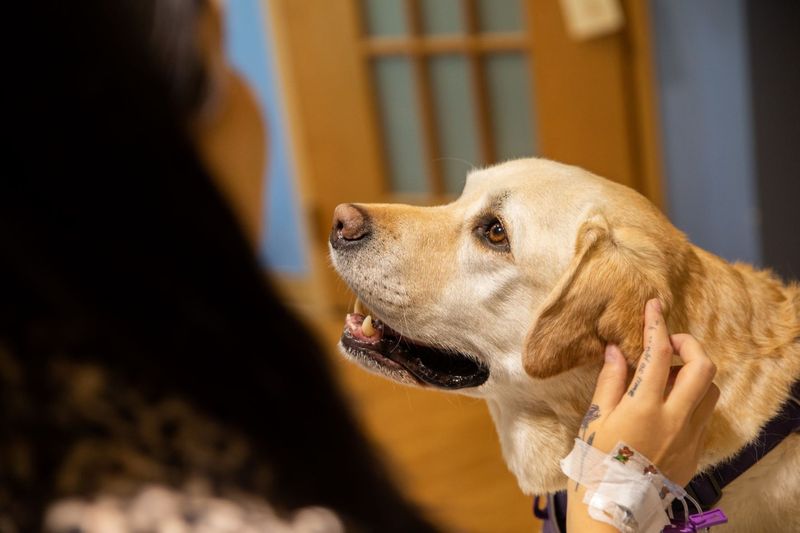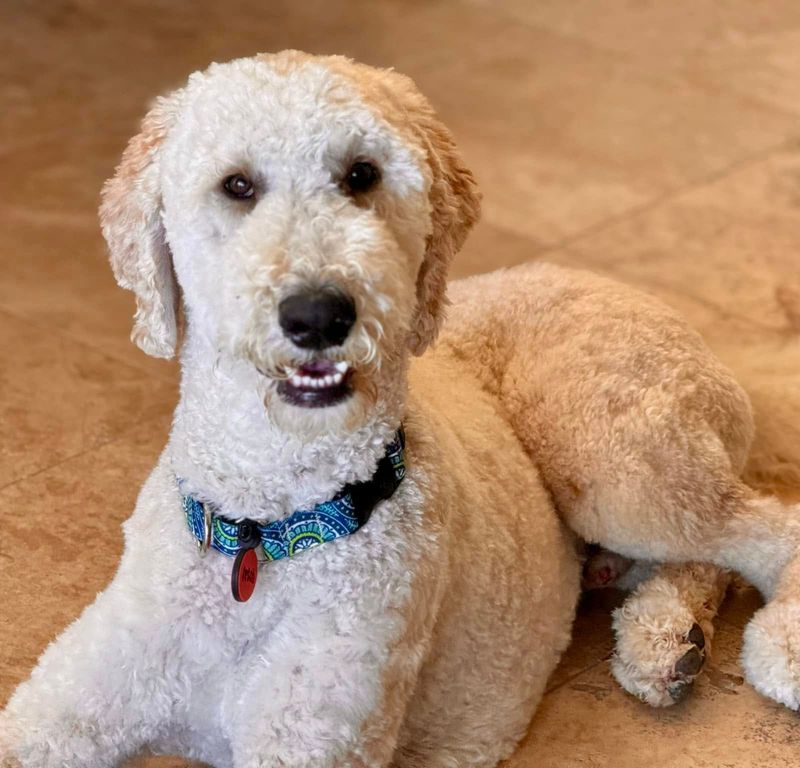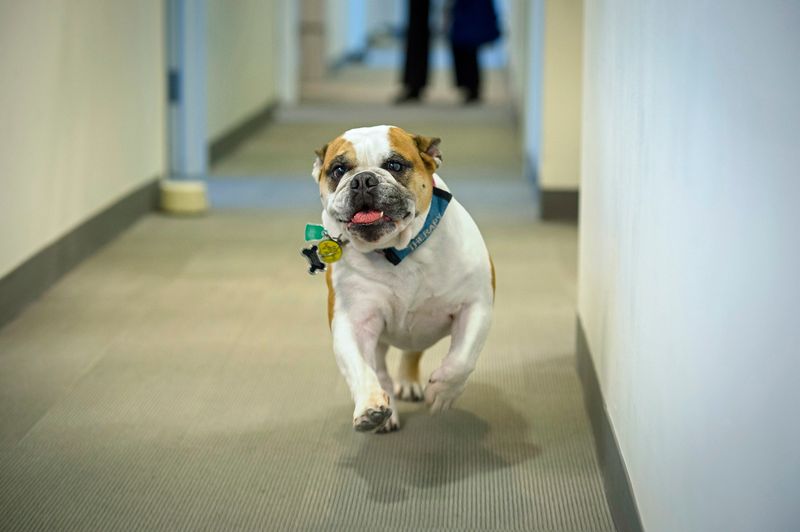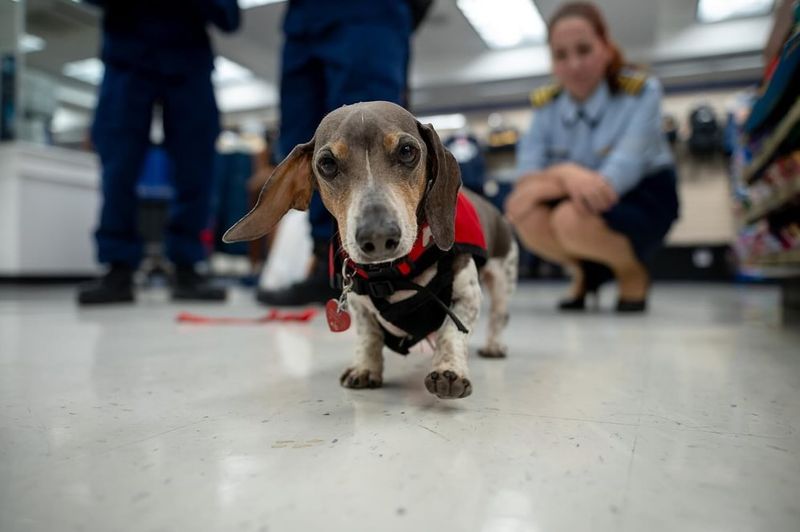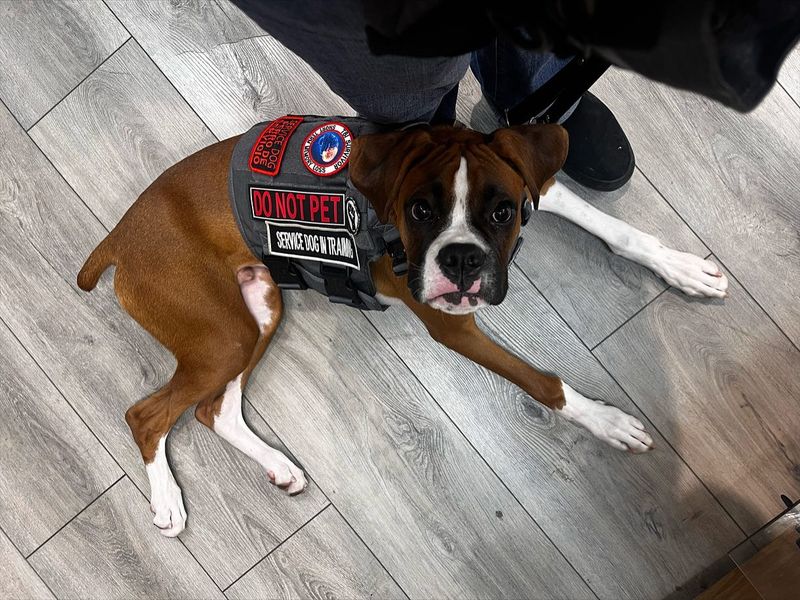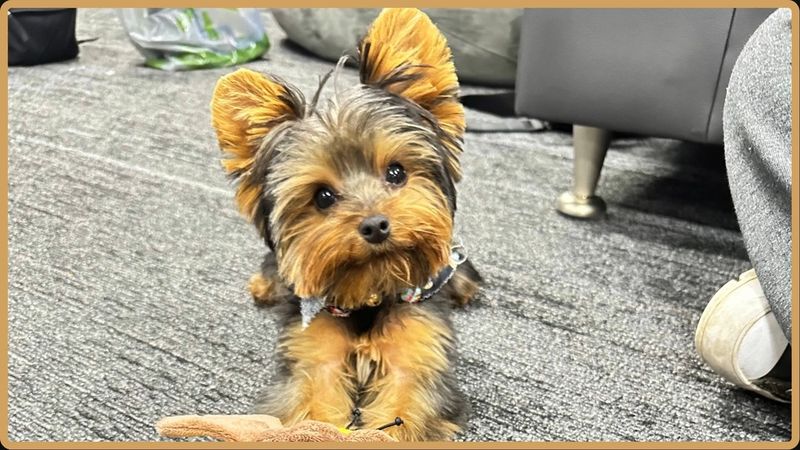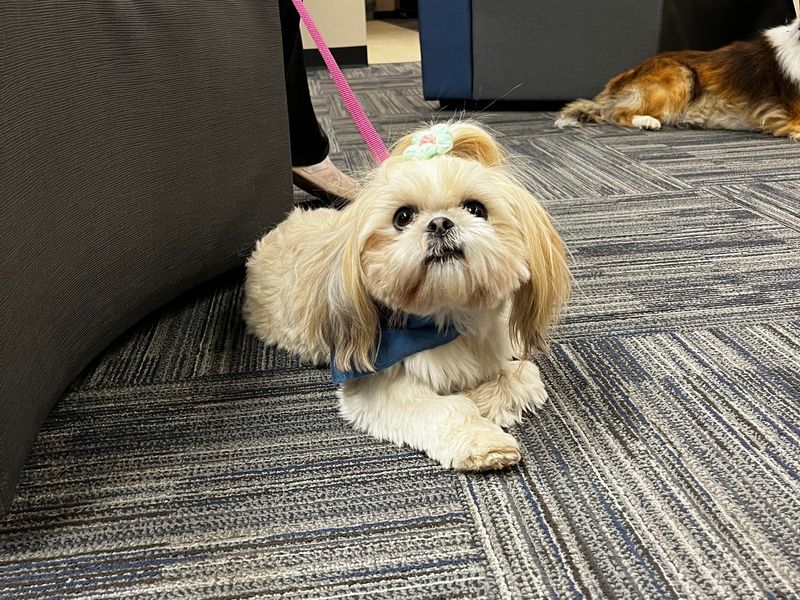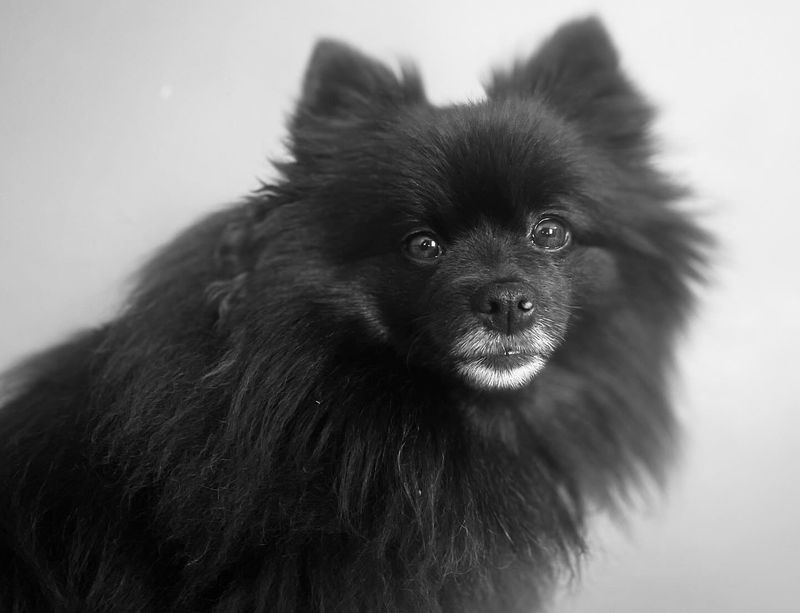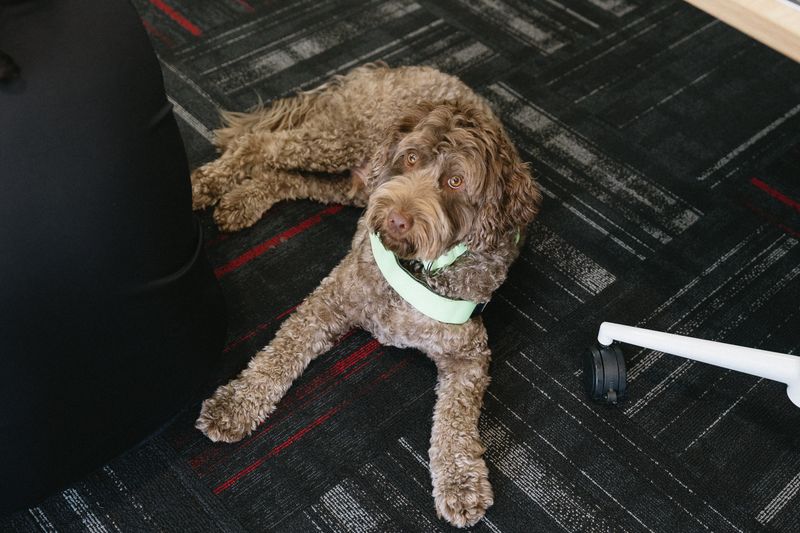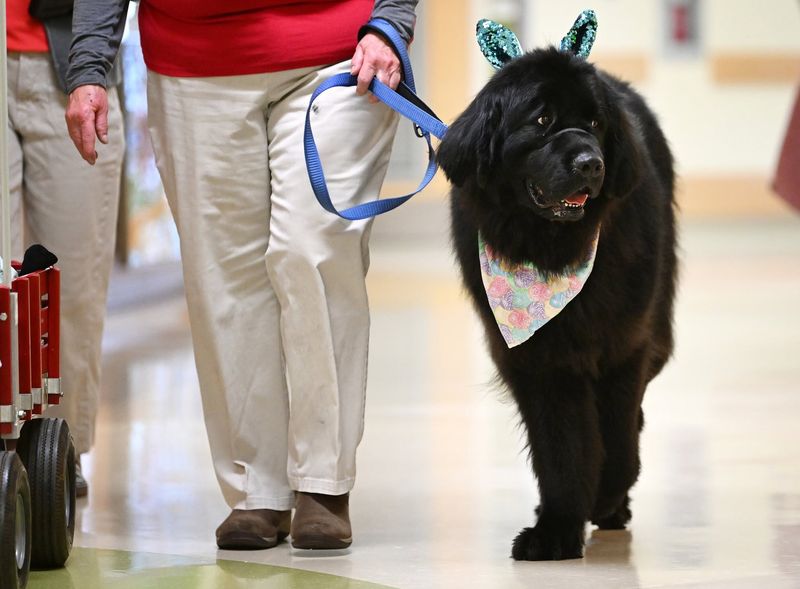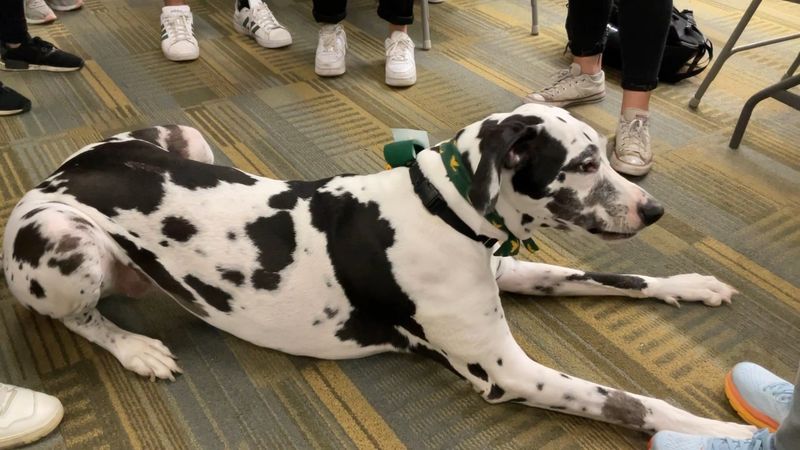Therapy dogs offer emotional support and comfort to those in need. They possess unique qualities that make them particularly effective in therapeutic settings. This blog post explores fifteen dog breeds renowned for their therapy capabilities, examining what makes each breed special.
Labrador Retriever
With their wagging tails and welcoming eyes, Labrador Retrievers are often the first choice for therapy work. Their outgoing and energetic nature allows them to connect with people of all ages. Whether in a hospital or a nursing home, they bring joy and warmth.
Labradors are known for their patience, making them suitable for sessions with children. They have an innate ability to sense emotions, offering comfort when needed.
Fun fact: Labradors have been used as guide dogs since the early 20th century, showcasing their intelligence and reliability.
Golden Retriever
Golden Retrievers have a heart of gold that matches their shiny coat. Their gentle temperament and eagerness to please make them exceptional therapy dogs. In senior homes, they provide companionship and can even ignite joyful memories.
Their intelligence and adaptability mean they can handle various therapeutic environments, from schools to hospitals. Their soft, fluffy fur invites cuddles, which can be incredibly soothing.
Did you know? Golden Retrievers were originally bred for hunting and retrieving game, but their friendly nature soon found them roles as therapy and service dogs.
Poodle
Poodles are not just for show; they have the brains and temperament to shine as therapy dogs. Their elegant appearance is complemented by their sharp intelligence, making them quick learners.
They excel in therapeutic environments due to their hypoallergenic coats, which are ideal for people with allergies. They engage well in activities and enjoy performing tricks that entertain and comfort.
Poodles come in various sizes, allowing them to adapt to different spaces and needs. Originally bred in Germany, their name means ‘to splash,’ referring to their love for water.
Cavalier King Charles Spaniel
The Cavalier King Charles Spaniel, with its soulful eyes and gentle presence, is a natural at spreading love. Their small size and affectionate nature make them perfect lap dogs for therapy.
They thrive on human interaction and have an uncanny ability to sense when someone needs comfort. These dogs are particularly effective in one-on-one sessions, providing emotional support and soothing anxious minds.
A bit of history: This breed was a favorite among British royalty, often seen lounging in the laps of kings and queens.
Bulldog
Despite their gruff appearance, Bulldogs have a heart full of affection and empathy. Their laid-back attitude and love for humans make them great therapy companions, especially for children.
They are known for their tolerance and patience, often sitting quietly by a person’s side to offer reassurance. Their distinctive appearance also brings smiles and laughter, making them a hit in various settings.
Interesting fact: Bulldogs were originally bred for bull-baiting but have since become gentle and loving family pets.
Beagle
With a nose for adventure and a tail full of wags, Beagles are a delightful addition to therapy work. Their curious and friendly nature makes them approachable and engaging, particularly for children.
Beagles are great listeners and have a calming effect during reading sessions, encouraging children to relax and enjoy. Their small size allows them to fit comfortably in any setting.
Did you know? Beagles have been used in law enforcement for their scent detection abilities, but they equally excel in spreading joy and comfort.
Boxer
Boxers are known for their boundless energy and playful spirit, making them wonderful therapy dogs for active engagements. Their joyful demeanor can uplift moods and encourage physical activity in therapeutic settings.
They are protective and loyal, forming strong bonds with those they work with. Boxers are particularly effective in environments requiring stimulation and movement.
A fun fact: Boxers were named for their tendency to ‘box’ with their front paws during play. Their playful antics bring laughter and joy to those around them.
Yorkshire Terrier
Yorkshire Terriers may be small in stature, but they have big hearts full of love and affection. Their compact size allows them to snuggle comfortably on laps, often helping to lighten hearts and spirits.
They have a lively and spirited personality, bringing smiles and laughter wherever they go. These dogs thrive in close-knit environments, offering companionship and warmth.
Did you know? Yorkshire Terriers were originally bred to catch rats in textile mills, but today, they capture hearts as devoted companions.
Bichon Frise
With a fluffy, cloud-like coat and a joyful bounce, Bichon Frises are known for their friendly and cheerful demeanor. They have an uncanny ability to bring laughter and joy into therapeutic environments.
Their hypoallergenic fur makes them an ideal choice for people with allergies, allowing them to spread happiness without worry. Bichons are particularly engaging with children, providing comfort and companionship.
Fun fact: The Bichon Frise was a favorite among European nobility, often seen in the courts of Spain and France, spreading joy with their playful antics.
Dachshund
With elongated bodies and curious eyes, Dachshunds are a delightful addition to therapy settings. Their playful nature and curiosity make them engaging companions, especially for children.
Dachshunds are known for their loyalty and have a knack for lifting spirits with their antics. Their small size allows them to fit comfortably in intimate environments.
Did you know? Dachshunds were originally bred in Germany to hunt badgers, but their charming disposition has made them popular therapy dogs worldwide.
Shih Tzu
Shih Tzus are known for their regal appearance and gentle demeanor, making them ideal therapy dogs. Their calm nature makes them perfect companions for seniors, providing comfort and company.
These dogs have a rich history as companions to Chinese royalty, and their affectionate nature is a testament to this legacy. Shih Tzus thrive on human interaction, offering love and companionship wherever they go.
Interesting tidbit: Shih Tzus are often referred to as ‘lion dogs’ due to their resemblance to traditional Chinese guardian lions.
Pomeranian
Pomeranians may be small, but they are full of life and enthusiasm. Their fluffy coats and bright eyes make them irresistibly charming, bringing smiles and warmth to therapy sessions.
These dogs have a lively and outgoing personality, thriving in environments where they can interact with people of all ages. Pomeranians are particularly effective in lifting spirits and creating joyful atmospheres.
Fun fact: Pomeranians were favorites of Queen Victoria, who helped popularize the breed in the 19th century with her own small companion.
Cocker Spaniel
Cocker Spaniels, with their expressive eyes and long, flowing ears, are natural charmers in therapeutic settings. Their friendly and sociable nature makes them great companions for children and adults alike.
These dogs thrive on interaction and have a calming presence that can reassure and comfort those in need. They are particularly effective in environments where gentle companionship is required.
Did you know? Cocker Spaniels were originally bred for hunting, but their gentle disposition has made them beloved therapy and companion dogs.
Newfoundland
With a heart as large as their frame, Newfoundlands are gentle giants known for their calming presence and protective instincts. Their patient and caring nature makes them excellent therapy dogs, especially for children.
These dogs have a natural affinity for water and enjoy outdoor activities, which can be therapeutic for individuals needing physical engagement.
Interesting tidbit: Newfoundlands are known for their lifesaving abilities in water rescues, thanks to their strong swimming skills and innate sense of duty.
Great Dane
With a stature that commands attention, the Great Dane is often referred to as a gentle giant. This breed’s calm and patient demeanor makes it a wonderful therapy companion, especially in environments where reassurance is needed.
Great Danes are known for their adaptability. Whether in a bustling hospital or a quiet nursing home, they bring a sense of tranquility. Their large size might be intimidating at first glance, but their warm-hearted approach quickly wins over hearts.
Fun fact: Originally bred for hunting, the Great Dane has transformed into a loving companion, providing solace and joy to many.
